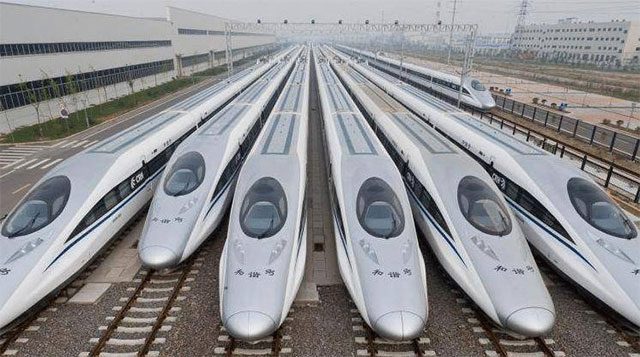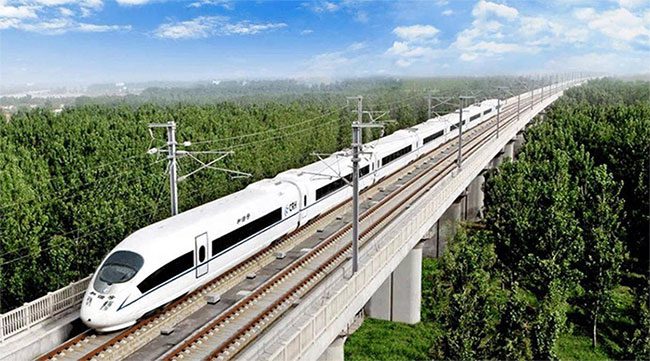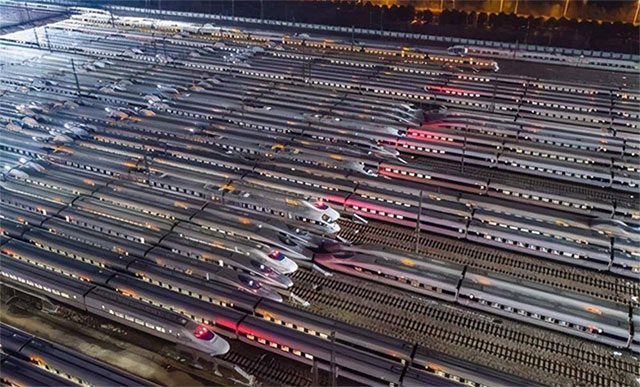Everything produced has a “lifespan,” and this includes high-speed rail (HSR).
When Do Trains and High-Speed Rail “Expire”?
Among modern transportation options in China, high-speed rail (HSR) has gained popularity among passengers due to its speed and safety.
Moreover, the questions raised by the Chinese public regarding HSR are not limited to speed or technology but also concern the lifespan of these trains and what happens once this new mode of transportation is retired.
In reality, the lifespan of HSR is influenced by various factors such as design, materials, and maintenance.
Taking the Hexie/Harmony high-speed trains of China as an example, their lifespan varies by generation, typically ranging from 20 to 30 years.
Hexie/Harmony, also known as EMU (Electric Multiple Unit), refers to a general category of high-speed trains operated by the China Railway Corporation.
These trains were developed based on foreign technology and produced under specific technology transfer agreements, including models such as: EMU CRH1 to CRH5, EMU CRH380A(L), EMU CRH380B(L), and EMU CRH380C(L).

The lifespan of HSR is influenced by various factors. (Illustrative image).
Generally, the lifespan of the first-generation Hexie/Harmony trains – EMU CRH1 is 25 years, while the second generation (EMU CRH2) and the third generation (EMU CRH3) are around 20 years.
The latest fifth generation (EMU CRH5) can achieve a lifespan of 30 years.
It is worth noting that the first batch of high-speed trains in China was put into operation in 2007, meaning that after many years of service, they are still in use—suggesting that they were designed and manufactured quite well.
Another important point is that compared to other modes of transportation, the accident rate of HSR is relatively low. This is due to strict manufacturing and maintenance standards.

The accident rate of HSR trains is relatively low. (Illustrative image).
Where Will They End Up?
However, when nearing the end of their lifespan, there are still many ways to utilize high-speed rail lines (trains and tracks).
The first option is to transfer the trains, even if they are “aged,” but still safe, to lower-speed rail lines. This approach—while slightly reducing the speed—can still meet the rail transport needs of certain regions.
Additionally, trains and tracks that have undergone strict inspections and are deemed no longer fit for operation may be considered for conversion to educational or tourist purposes.
For example, they could be dismantled and installed in railway education facilities to serve as teaching tools or could become special attractions in scenic areas to attract tourists for experiential activities.
However, as the HSR network expands, a significant amount of tracks will inevitably be decommissioned. At this point, it is essential to handle these materials scientifically and environmentally friendly.
Some metallic materials can be recycled and reintegrated into new HSR lines, while non-metallic materials will be properly disposed of to ensure that the environment is not polluted.

Burying old and damaged tracks on-site will save costs. (Illustrative image).
Conventional railways are primarily laid with a layer of stone known as ballast, which helps distribute pressure on the tracks, reduces vibrations and noise, and can extend the lifespan of the tracks.
However, HSR tracks have very high requirements for smoothness, utilizing tracks without ballast and are bonded with concrete or asphalt.
For tracks that are being replaced, depending on their specific condition, the Chinese railway sector will implement different handling measures.
For lightly worn tracks, they will first be stored at stations or maintenance yards as a backup. However, if the wear is severe, they will need to be removed, and if transportation conditions allow, they will be loaded onto trucks and sent to steel mills for recycling.
Given that the HSR network in China is vast and passes through many areas that are difficult to access for transportation, burying old and damaged tracks on-site will be more cost-effective.


















































